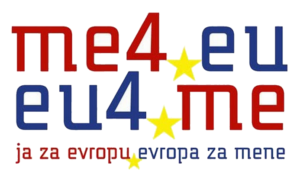During the 1990s, the European Union has sought for an appropriate long-term foreign policy strategy for developing political, economic, and institutional relations with South-Eastern European countries.
In May 1999, the European Commission proposed the adoption of a long-term foreign policy for the countries of the region that at the time had not been involved in another mechanism of institutional relations with the EU (the Republic of Albania, Bosnia and Herzegovina, the Republic of Croatia, the Republic of Macedonia, and the Federal Republic of Yugoslavia), under the title The Stabilisation and Association Process for South-Eastern Europe (SAP), which amends, i.e. deepens and broadens the previous policy towards this part of Europe. The new policy, as the pinnacle in moving closer to the European Union, envisages the conclusion of stabilisation and association agreements, by way of which the countries gain the status of associate EU members, the status identical to that the previous candidates for membership received when their accession agreements had entered into force. In addition to the possibility of moving towards EU membership, this contract with the EU has as its objective to stabilise the South-Eastern European countries by ways of:
- Admitting them to the European Union;
- Developing economic and trade relations with the region and within the region;
- Increasing aid for democratisation, civil society development, education and the development of institutions;
- Finding opportunities for cooperation in various field, including justice and home affairs;
- Developing political dialogue, including at the regional level.
Given the large differences from one country to another, the SAAs, in addition to the identical basic structure, are envisaged to be tailored according to the specific political, economic, and other circumstances in each country.
The European Council meeting in Cologne on 3-4 June 1999 confirmed the EU’s readiness to encourage South-Eastern European countries’ full integration in the EU on the basis of the Treaty on the European Union and meeting the criteria set out at the European Council in Copenhagen in June 1993 and the European Council in Madrid in 1995. The European Council meeting in Santa Maria de Feira on 19-20 June 2000 went a step further by concluding that all countries involved in the SAP are potential membership candidates, as well as that it is the EU’s objective to ensure as full as possible an integration of South-Eastern European countries into the Europe’s political and economic core.
The Zagreb Summit meeting held on 24 November 2000, which gathered heads of state and government of EU member-States and SAP States, it was jointly confirmed that the SAP is the road leading to EU membership.
The European Council adopted “The Thessaloniki agenda for the Western Balkans: Moving towards European Integration” (The Thessaloniki Agenda) on 21 June 2003, which envisages the introduction of a whole set of new instruments and cooperation frameworks between the EU and SAP countries, based on instruments and experiences from the EU enlargement process.
From the outset, the Stabilisation and Association Process was intended to be an instrument that would enable the region’s countries to build and maintain stable democratic institutions, ensure the rule of law, and create sustainable, open, and progressive economies. The SAP is both a bilateral and regional process, which creates links between each individual country and the EU and sparks regional cooperation among SAP countries and their cooperation with neighbours. A special role in the process is reserved for the Stability Pact for South Eastern Europe, an assistant and complementary mechanism of regional stability. This is viewed especially in the heightened contacts and regular consultations between the European Council, the Stability Pact, and the region’s countries. The SAP has flexible instruments, which are adaptable to the needs and particularities of each of the countries, in order to ensure the pace of progress in line with capabilities of each of the countries.

